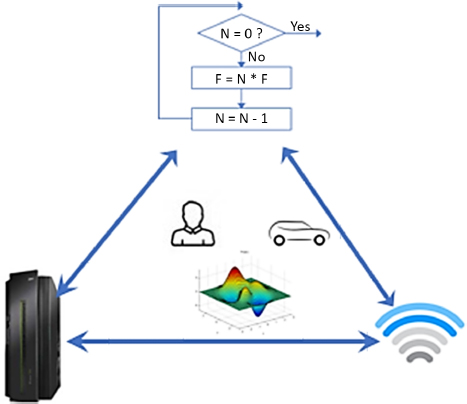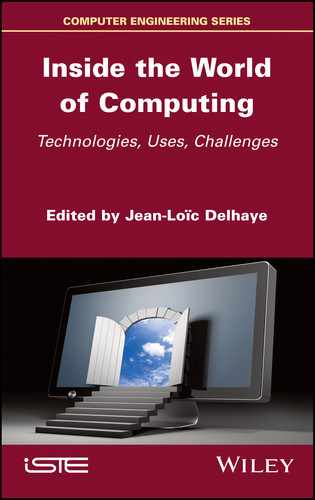Preface
I discovered computer science at the culmination of a university course in mathematics, with an MPhil, then a PhD in 1970 in theoretical computer science. I was fascinated by the potential of this science, which was then entering higher education, and the technologies that could already be seen, and I chose to dedicate my professional life to it. This is what I have done, working with researchers, engineers, and users in various settings: universities and research centers, companies (computer manufacturers, network operators, large and small companies and government agencies) and large computer centers at the service of research, supporting the transformations associated with these new technologies.
What an adventure!
Computer science was, in its early days, a field that concerned only a small number of specialists, the “computer scientists”, also called computer engineers, according to the main orientation of their activity. It developed slowly, then more and more rapidly with regard to the “digital world”, in which a large part of our planet lives today. It seems important to me to understand this new world, its technological bases, the motives of its main players, the impact on individuals and on society as a whole. This is the main objective of this book, which seeks to address the entirety of this phenomenon without going into the details of scientific or technical aspects, because many books dedicated to these aspects already exist.
The French term “informatique” (computer science) was coined in 1962 by Philippe Dreyfus, who was the director of Bull’s Centre national de calcul électronique, or Bull’s National Center for Electronic Computing, in the 1950s and a pioneer of the discipline in France. It is thought to be derived from the contraction of the words “information” and “automatique” (automatic).
In 1966, computer science was defined by the Académie Française (French council for matters pertaining to the French language) as the “science of rational processing, particularly by automatic machines, of information considered as the medium of human knowledge and communications in the technical, economic and social fields.”
According to Gérard Berry, professor at the Collège de France, “the word ‘computer science’ refers to the science and technology of information processing and, by extension, the industry directly dedicated to these subjects.”
What we call “computer science” is changing the way we work, invading our homes, becoming part of everyday objects and offering us new leisure activities. It is even at the origin of new modes of sociability, new professions and a new economy: it is everywhere!
Your smartphone is much more than just a phone: a high-quality digital camera, access to databases, integrated GPS, all kinds of applications, etc. You communicate very easily with your loved ones (and those less close to you!), for example, through social networks. The good (or bad) functioning of certain equipment in your home is directly related to small hardware and software: TV, appliances, remote control, security, etc. Many devices in modern cars are linked to computer science: combustion, ABS, cruise control, driving assistance, GPS, in-car TV, etc. The complete and detailed design of aircrafts is now based on modeling and simulation, right up to wind tunnel tests, which are carried out in “digital wind tunnels”.
This is true in many other industrial sectors. Artistic creations increasingly use computers: cinema, photography, music, painting, etc. We even talk about “digital art” and artists creating a work of art from their own software, sometimes called an algorist. All fields of science are rapidly evolving thanks to the possibilities offered by computer science: medicine, meteorology and climatology, astronomy, biology, physics, chemistry, geology, mathematics, social sciences, economics, architecture, etc.
This “digitization” sometimes presents problems (malfunctions, bugs) and even risks (data theft, phishing, attacks from hackers, etc.). Not to mention the destruction of jobs, which will probably not be compensated by the creation of new ones.
The pillars of computer science can be represented as in Figure P.1.

Figure P.1. Pillars of computer science. For a color version of this figure, see www.iste.co.uk/delhaye/computing.zip
These three pillars are:
- – hardware: a set of equipment that ensures the processing of information. Hardware, especially processors, have evolved considerably since the first “computer”;
- – communication means: they enable the building of networks on various infrastructures (wires, radio waves, etc.);
- – software: without it, nothing would work. Software contains sequences of instructions that describe in detail what the computer is being asked to do. These range from operating systems to application programs and user interfaces.
In the middle of these three pillars, which are at the heart of many scientific and technical fields, we find everything that we more or less use consciously in our daily lives and which is closely dependent on computer science.
This book briefly retraces the history of these three pillars, describes the main technologies associated with them and discusses the impact of computer science today through a few application areas, not forgetting the societal impact. It is divided into seven chapters.
Chapter 1 discusses some important concepts before retracing the history of hardware, from the first attempts at the automation of calculations, to today’s computers with their diversity and architectures. It ends with questions about the future, both in terms of technology and environmental issues.
Communication networks play an essential role in the use of computers. Chapter 2 presents their infrastructures and protocols, with a special focus on the Internet, and some applications with a focus on the Web. I also address an important aspect: the vulnerability of networks and the need to protect them against malicious attacks.
Chapter 3 is devoted to software, the translation of an algorithm and programming languages, with two levels of operating systems and applications. The main methods of development and validation of software are discussed, as well as the modes of distribution associated with “licenses”.
Computers process data, and networks transport it. Representation and organization of the different types of data, from isolated “basic data”, to files, to databases and Big Data that allow the creation of knowledge and even intelligence: this will be the subject of Chapter 4.
I have chosen four “technological bases” that enable us to build the services we have today and that are profoundly changing our daily lives: embedded systems in billions of devices, artificial intelligence, which is too often a selling point, the Internet, which enables people and computers themselves to communicate without spatial limits, and finally image processing and vision. These are the main aspects of Chapter 5.
There are countless areas of use for computing and networks, but I have chosen seven for Chapter 6: the robots we can see in factories (and now in houses), virtual reality and augmented reality that allow us to immerse ourselves and interact in virtual worlds, computing at the service of medical personnel and our health, the connected car that may soon be autonomous, the smart city, smart mobility, and finally the factory of the future, or factory 4.0.
Chapter 7 takes a step back from information and communication technologies to address some of the questions that their massive presence in all sectors of our lives seem to pose to society: various threats and the fight against cybercrime, the protection of personal data and privacy, the influence of these technologies on society, the dangers for democracy with the rise of large companies known as GAFA, the digital divide (because a large part of the planet is excluded from this digital world), the risks of a deviation in artificial intelligence, the creation of a class of “bionic humans” equipped with prostheses and, finally, the still-nascent doctrine of the immortal human and transhumanism.
To conclude, the question we must ask ourselves is: “what kind of society do we want?” Taking into account the “revolutions” that our societies have undergone, such as writing, printing and industry, none have had such a great impact on our lives and on society in general. We can be passionate about these “new technologies” – and I have been, since they have been at the center of my professional life – but we must keep control of their development and especially of their uses to avoid, if it is still possible, their use by groups seeking to dominate the world.
I wish you a good journey through this fascinating world.
